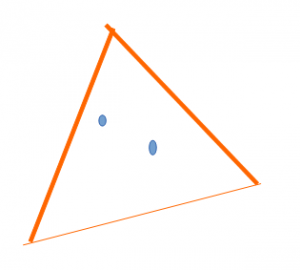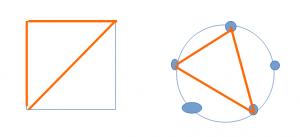What is the area of the middle rectangle (coloured/shaded)? (Please note none of the rectangles in this figure is a square.) 
Select the correct answer from the choices below:
(A) 13 (B) 15 (C) 22 (D) 31 (E)
(F) cannot be determined from the given condition.
It’s a simple question, eh? Which choice you’ve taken as the answer? Try not to guess randomly.
Let some hints be revealed.
If employing algebra, then which variables/unknowns shall we introduce? Obviously, the area sought shall be one unknown (let’s denote it as A), and the width that the three triangles share (denote it by h) can be another. So the length of the leftmost rectangle is (25/h), the length of the rightmost rectangle is (32/h). This leads to:
25 + A = 8h, and
A+32 = 9h
Eliminate h to find A will lead to the result.
Alternatively, we can use proportion to help solve this. Since all three rectangles share the same length, so the area ratio shall be equal to the ratio of the lengths:
(25+A) : (A+32) = 8 : 9
We only have one variable A, not two, as in the previous approach. This makes the solution even simpler.
You already got the answer, Eh? Hopefully, it’s neither (E) nor (A). It’s the one you should figure out from the system of equation(s).
If you found it already, it’s not necessary to look at others to ask “Am I correct?” Just bring the result to check if it fits those equations.





